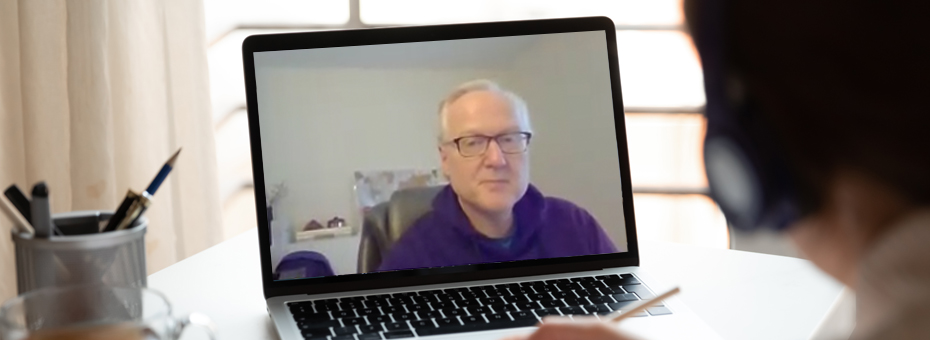My usual work-life with LEI has me always on the road visiting the gemba of various organizations. However, the pandemic has me sitting at home, as many of you likely are. This separation from the gemba has given me the chance to contemplate how to coach people virtually and, on a deeper level, the real value and purpose of genchi gembutsu. I find myself thinking about many of the same things that Akio Toyoda, CEO of Toyota Motor Corporation, is contemplating, which he shared at the recent Toyota shareholder meeting (and which John Shook and Jeff Liker wrote an excellent Lean Post about).
As part of my current duties at LEI, I support a software company that wants to build its data centers faster, and that means eliminating a vast amount of waste from the process. We’ve spent time in San Antonio, Chicago, and Phoenix studying the placement of electrical terminations, the installation of hardware to carry the current to the servers, and other areas. My role has been to coach them how to observe and improve this work.
Then Covid-19 shut that down, and I’ve had to rethink how to teach someone who I can no longer be with in the field.
Over the last two months, we have continued our gemba coaching virtually. Many team members are still on site — brave people who work on the front line and add value every day (We see other essential workers now at our grocery store, our health clinic, or stopping by to pick up our garbage).
But not being able to be on site, we’ve designed a curriculum and related materials that can help them without having to be on site with them. Here is an example of the structure that we are using to coach work observation and standardized work:
Work Observation:
1. Characteristics and Content of Work
-
- 3Ms and Value, Waste, and Incidental Work
2. Building Routine Work and Time Study
-
- Cyclical, Periodic, and Abnormal Work
- Sequencing the Work
3. Job Breakdown
4. Job Instruction
Standardized Work:
- Introduction to Standardized Work
- Application of Standardized Work in Construction
For each of these cycles, we repeat a basic five-step process, as follows:
- Introduce the concept and its purpose. In this case, how and why we observe the work this way?
- Show a video of someone working. We’ve used an example from manufacturing even though our audience is from construction because the industry is not important at first – we are teaching concepts.
- Ask participants to provide structured feedback on the video. What did they see?
- Ask them to go and observe their job site/work area, videotape it, and write down the fundamental observation points they’ve seen.
- Bring their observations back for review with us as their coaches.
It is a straightforward structure that incorporates teaching, self-learning, and structured coaching.
Sharing What I’ve Learned
By being forced to redesign how I coach, I realized not only that I CAN do the work virtually, but that doing so can sometimes be more effective. When I coach on-site, the people I coach often become dependent on me arriving on their doorstep before learning starts. This dependency inhibits their learning.
Furthermore, my experience prompts me to think Toyoda’s comments at the shareholder meeting were meant to explain what he learned by rethinking the practice of genchi gembutsu—that it is as much about human development as it is about finding the waste in the observed process. If you are familiar with Toyota, you know that people development is at the core of its leadership philosophy.
Genchi gembutsu isn’t an easy word to translate from Japanese to English, but it fundamentally means “at the place, with the actual things.” While at Toyota, I worked for Teruyuki Minoura, an early CEO of Toyota North America and a student of Taiichi Ohno, the founder of the Toyota Production System (TPS). Minoura told me at one point that the concept of genchi gembutsu represents Toyota’s true uniqueness as a company and TPS’s contribution to the world. Big statement.
I asked “Why?” He frankly said that many companies adhere to other aspects of the Toyota Way, such as “Respect” and “Teamwork,” so Toyota can’t claim those as its unique cultural elements. However, where Toyota makes respect and teamwork come alive is through the idea of “Shop Floor First” – that the person on the front line is the one who adds value, so we must use genchi gembutsu to understand that value.
Of course, Minoura learned this from Ohno, who was famous for his Ohno Circle, in many ways, the original embodiment of genchi gembutsu.
What a genius Ohno was! It is such a simple thing – draw a circle on the shop floor and tell someone to stand in it and observe work. Why did Ohno do this (its purpose), and why was it effective? I experienced this myself many times during my career, particularly while with the Toyota Production System Support Center (TSSC), where we introduced the practice and helped changed the gemba of many companies.
The Ohno Circle is a tool for developing people – pure and simple. The basic idea is to watch the operator and understand the challenges in the work. But it’s much more than just that. My bosses (based on what they’d learned from Ohno) only asked me to “stand here and watch the operation.” I wasn’t given a set of “instructions” on how to observe, told how long to watch, or directed regarding what I should try to discover.
When my mentor returned after a couple of hours of letting me alone to observe, he asked what I saw. I shared with him, and he said: “Keep watching.” That’s it. So, standing in the Ohno Circle became a method not merely to complete a task, but in fact to open up my mind to the value of the work and the many challenges the team member faces all the time. It holds at its core that this learning comes through patient, focused, thoughtful observation. Zen-like in many ways.
So this, it seems, is Toyoda’s point: Whether you are inside Toyota or learning lean outside, we can all fall into patterns of just going through the motions – we practice genchi gembutsu because lean tells us to. But, to learn from a lean practice, we must clearly understand the purpose of doing it. At the shareholder meeting, Toyoda was reminding everyone of the need to clarify that purpose. He wasn’t saying he was going to stop — or that we should stop — going to the gemba.
Now, back to my new way of coaching at the software company. By causing the forced separation, the pandemic has reminded me of the purpose of genshi gembutsu and, in many ways, helped me elevate my coaching approach. More important, I learned that it’s OK – maybe even better – that the people I am coaching must stand in a circle by themselves to study the work. From this, as Toyoda and other lean leaders have taught and continue to remind us, they will learn so much.
There is a famous Chinese proverb: “Out of the depths of misfortune comes bliss.” I hope the current crisis can make us all see the value-creating work clearer and appreciate its importance.






